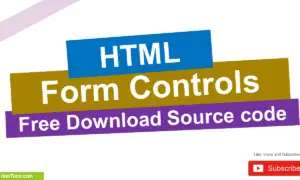Mobile Learning App Capstone Project
Chapter 1
Background of the Study
According to Priya Viswanathan (2013) Mobile application is a computer program designed to run on smartphones, tablet computers and other mobile devices.Apps are usually available through application distribution platforms, such as the Apple App Store, Google Play, Windows Phone Store, and BlackBerry App World. Some apps are free, while others must be bought. Usually, they are downloaded from the platform to a target device, such as an iPhone or Android phone, but sometimes they can be downloaded to laptops or desktop computers.
In 2013, the Apple App Store generated $10 billion in downloads. And both the Google Play Store and Apple App Store attracted over 50 billion downloads. For 2014, the momentum is likely to continue, but in a variety of directions. From spatial sensitivity for tracking exercise habits to having the power of IBM Watson on-the-go, 2014 will host exciting progress in the mobile development space. Executives from Icreon Tech, along with members of their software development teams, have collaborated to prioritize the most important mobile development trends for 2014. For businesses, brands and independent developers, this advice from Icreon Tech leadership will help guide successful mobile strategies for the upcoming year.
M-learning technologies include handheld computers, notebooks, mobile phones and tablets. M-learning focuses on the mobility of the learner, interacting with portable technologies. Using mobile tools for creating learning aids and materials becomes an important part of informal learning. This highly active process has proven to increase exam scores by replacing books and notes with small devices, filled with tailored learning contents. This mobile Application is an excellent opportunity to broaden the scope of the learning experience, as it allows learners to carry on learning while they on the move. However their needs and expectations are not the same as when they are in a classic M-learning setting. One of the key challenges of mobile learning is how to articulate mobile learning and e-learning seamlessly, so that the learning experience remains coherent and fluid.
1.1 Introduction
Advances in mobile technology have enabled a wide range of application to be developed that can be used by people in the move. Developers sometimes overlook the fact that users will want to interact with such devices while on the move. Small screen size, limited connectivity high power consumption rates and limited input modalities are just some of the issues that arise for small, portable devices. One of the biggest issues is the context in which they are used. As these devices are designed to enable users to use them while, the impact that the use of these devices has on the mobility of the user is a critical factor to the success of failure of the application current research has demonstrated that cognitive overload can be an important aspect of usability. It seems likely that mobile devices may be sensitive to the effects of cognitive overload, due to their likely deployment in multiple task settings and limitations of size. This aspect of usability is often overlooked in existing usability models, which are outlined in the next section, as these models, are design for application which is seldom used in a mobile context.
E-Learning is an excellent opportunity to broaden the scope of the learning experience, as it allows learners to carry on learning while they’re on the move. However their needs and expectations are not the same as when they are in a classic e-learning setting. One of the key challenges of mobile learning is how to articulate mobile learning and e-learning seamlessly, so that the learning experience remains coherent and fluid.
The purpose of the said application is to promote the learning about the proper using of computer and understanding on how it works and, for those who wanted to learn about computer programming and networking. This application is related to computer learning specifically in programming and networking.
1 1.2 Objective of the Study
General objectives:
To design and the creation of a mobile application for computer programming and networking.
Specific objectives:
- Determine and utilize appropriate mobile phone learning activities.
- Understand informative opportunities for mobile phones.
- Design learning activities for mobile phones.
- Learn computer programming and networking lesson in off-line sitting.
- To design and develop a well-designed application that can make the students feel like comfortable in using it.
1.3 Assumption of the Study
This study is conducted based on the following assumptions:
- That the doctors and staff will use the proposed system;
- Researchers assume data collection instruments are valid and reliable based upon their previous use.
- That the proposed system will be a great help to the students and teachers as well
1.4 Conceptual Framework of the Study
Conceptual IPO model for the proposed system
1.5 Significance of the Study
Beneficiaries:
- Students. Are the direct beneficiaries to Develops knowledge in Computer programming and networking especially in Hardware and software Discussions and they can study anywhere as long as they have this application.
- Will adopt an application to help all the students to improve their knowledge about computer concepts and the instructors to improve their teaching about computer programming and networking using the application.
- Future Researcher. They can improve the application by updating new lessons about the computer programming and networking.
- Instructor. Computer instructors can use the application to improve the teaching of the subject computer programming and networking. And they can use this mobile learning to get some questions for their fellow students while having a discussions regards to the topics. Because the instructor’s main role is to deliver and prepare the information, guide the students and support to be a future IT professionals someday.
1.6 Scopes and Delimitation of the Study
Scope:
- The app will run even without internet connection.
- The focus of the study will be on programming lessons and networking.
- The app will only run in android devices.
- The app uses a responsive design which will automatically adopt it design based on the screen resolution of the users phone.
Limitations:
- The app is not online, which means that you can use the app in an offline mode.
1.7 Definition of Terms
Android OS
Android is a mobile operating system (OS) based on the Linux kernel and currently developed by Google. With a user interface based on direct manipulation, Android is designed primarily for touchscreen mobile devices such as smartphones and tablet computers, with specialized user interfaces for televisions (Android TV), cars (Android Auto), and wrist watches (Android Wear). The OS uses touch inputs that loosely correspond to real-world actions, like swiping, tapping, pinching, and reverse pinching to manipulate on-screen objects, and a virtual keyboard. Despite being primarily designed for touchscreen input, it has also been used in game consoles, digital cameras, regular PCs, and other electronics. As of 2015, Android has the largest installed base of all operating systems.
Mobile Learning
Mobile learning is defined as “learning across multiple contexts, through social and content interactions, using personal electronic devices.” A form of distance education, m-learners use mobile device educational technology at their time convenience.


